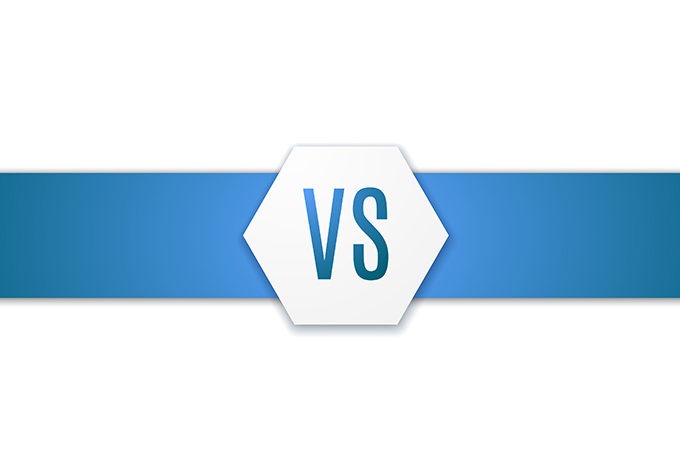In the world of product development and manufacturing, 3D printing and injection molding are almost universally acknowledged to sit atop any list of the various methods available. While each of these methods is versatile and well-suited to a number of situations and uses, they are quite different in several ways: method, material, volume, cost and optimal application — just to name a few.
While, as an entrepreneur, new product developer or engineer, you probably know that 3D printing and injection molding are definitely two options that you should research and pursue to create your product or prototype, it’s also important for you to know some of the key differences between the two. For starters, they operate in completely different manners. Let’s take a quick overview of what that means.
Injection Molding vs. 3D Printing: What Are They?
Injection molding involves taking a heated, liquefied plastic material and injecting it into a mold that contains what can be considered a 3D “negative” of your part: As the liquefied plastic fills that mold cavity, it takes its shape, forming your piece. Once the mold cavity has been filled, the base material is allowed to cool and re-solidify, and is then ejected from the mold for inspection and distribution.
Injection molding machines cost up to several hundreds of thousands of dollars, facilitating the entire cycle: material loading, injection, cooling and part ejection. Molds for injection molding are almost always custom made from steel, aluminum or other metals to fit the specifications of a particular part, and they are created in two halves so that they can split apart to eject the part. In addition to the cavity with that “negative” shape of your part, molds also contain hollow areas known as “runners” to convey the melted material into the cavity.
The 3D printing process works very differently from injection molding. Rather than a preformed mold to shape your part, the product’s dimensions, shape and other physical qualities are loaded into a 3D printing machine via CAD drawing or other compatible file. The machine then literally builds the part from the ground up, working with thin strands of plastic substrate fed through the machine.
Injection Molding vs. 3D Printing: What Are the Differences?
Now that you’ve seen the different ways in which injection molding and 3D printing operate, it’s probably not so surprising that there are a number of benefits and qualities that each has to offer. Once you understand these differences, you’ll be in a great position to make an informed decision about which process is best for your needs.

Cost: Injection molding machines are typically found in dedicated shops that specialize or offer that capability to a number of customers. This is due in large part to their upfront cost. As a capital investment of several hundred thousand dollars, a good injection molding machine will provide years (if not decades) of usage and return on investment. For entrepreneurs and product creators, however, an injection molding machine is not something that one would simply purchase. The much more cost-effective option is to use an injection molding provider.
We mentioned above that most injection molds are custom built. As a customer of an injection molder, the cost of that injection mold rests with you, and can run into the high thousands or tens of thousands of dollars. You do, however, own the mold once it’s built.
3D printing machines, on the other hand, typically only cost a few thousand dollars, and there is no upfront setup cost as there would be with a custom injection mold. With 3D printing, your financial responsibility to an external provider is only for machine time and materials — and it is even within financial reach for many small businesses to invest in their own 3D printer.
Volume: Why would someone invest all that money in an injection mold when 3D printing is so much less expensive? Each process is better for specific volume needs. Injection molds are ideal for situations where high-volume production is required — five-, six- or seven-figure quantity runs. At that high of a volume, the investment in a mold (and machine time) pays itself back once inventory is sold.
3D printing, conversely, is a much better choice for low-volume needs, like prototyping or on-demand businesses. For a low-cost prototyping option, in fact, 3D printing really can’t be beat — there’s little sense in making the investment in injection molds, material and machine time for a short prototype run. Plus, more and more inventory-conscious businesses are looking to 3D printing to keep overhead costs down and only create pieces and parts as they are ordered or requested. What’s more, 3D printing has even reached a point where it can reliably and reasonably quickly complete production runs of a thousand pieces or more, making it more viable for low-medium range runs.

Time: On a per-part cycle basis, injection molding is the clear winner. That cycle doesn’t tell the whole story, though. Creating the custom mold out of steel or aluminum can take weeks or months. You may also have to wait for machine time, depending on your service provider. These factors make overall turnaround time a bit longer than one might expect when they think of cycle times of a few seconds or minutes. 3D printing takes longer to make the actual part — usually a few hours, depending on size and design — but there is almost no lead time required. You can even email your design to your supplier and have it start making the part as soon as it’s able, which means that you might see your prototype in as soon as a few days.
On the horizon: With injection molding, you know exactly what you’re getting — which, in many manufacturing cases, is a good thing. The process hasn’t changed much aside from automation improvements, but for high-volume, high-quality production runs, it hasn’t needed to change — it does the job. While 3D printing isn’t really an alternative to injection molding in those situations, it does have the benefit of still being a developing technology. That means that it’s more than worth keeping an eye on and continuing to educate yourself on it, as you’re doing right now. Advances continue to be made that let 3D printing lend itself to more and more applications and requirements, including faster cycle times, more materials and higher production runs. By staying informed of these developments, you’ll be ready to reap their benefits.



